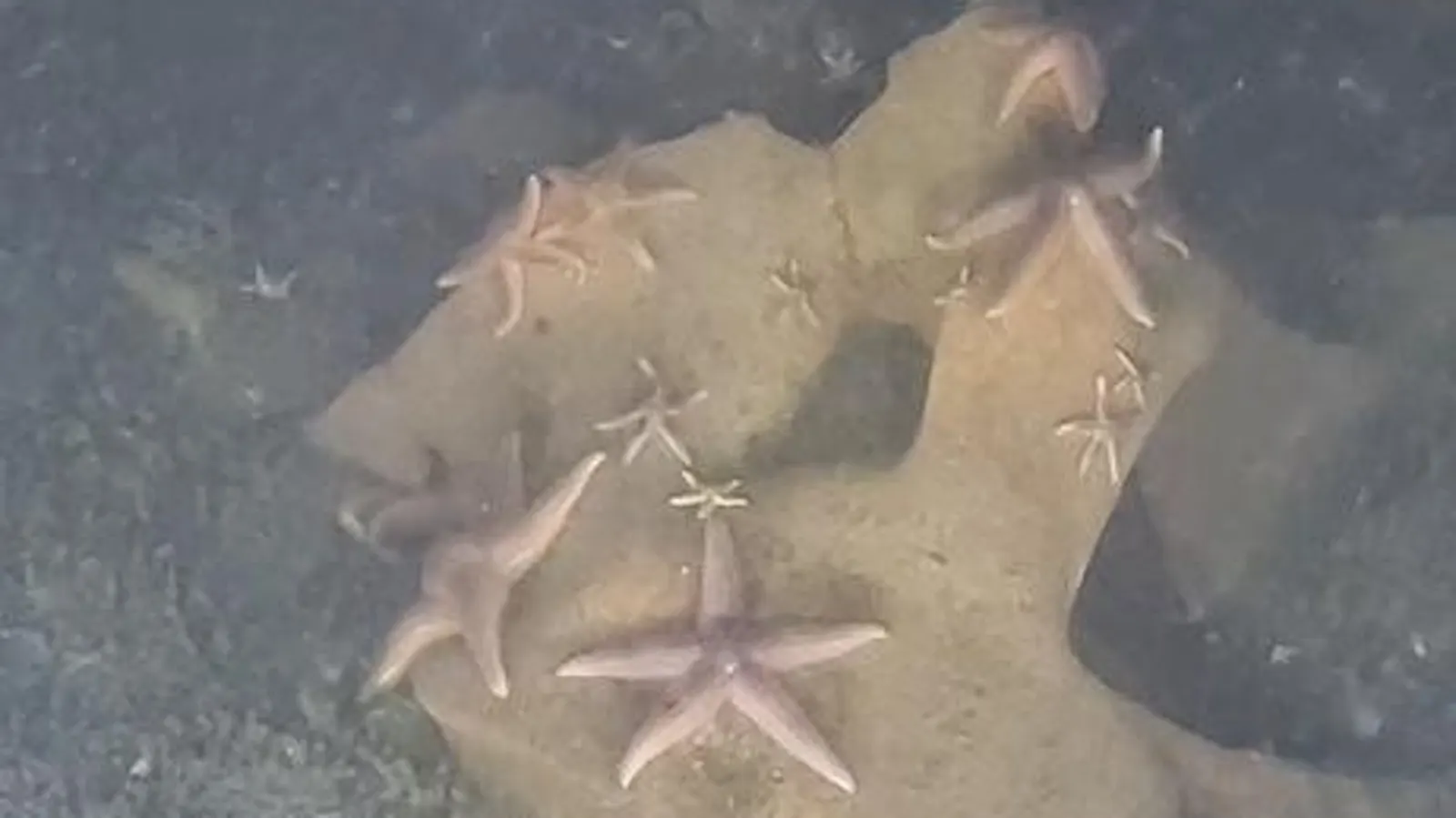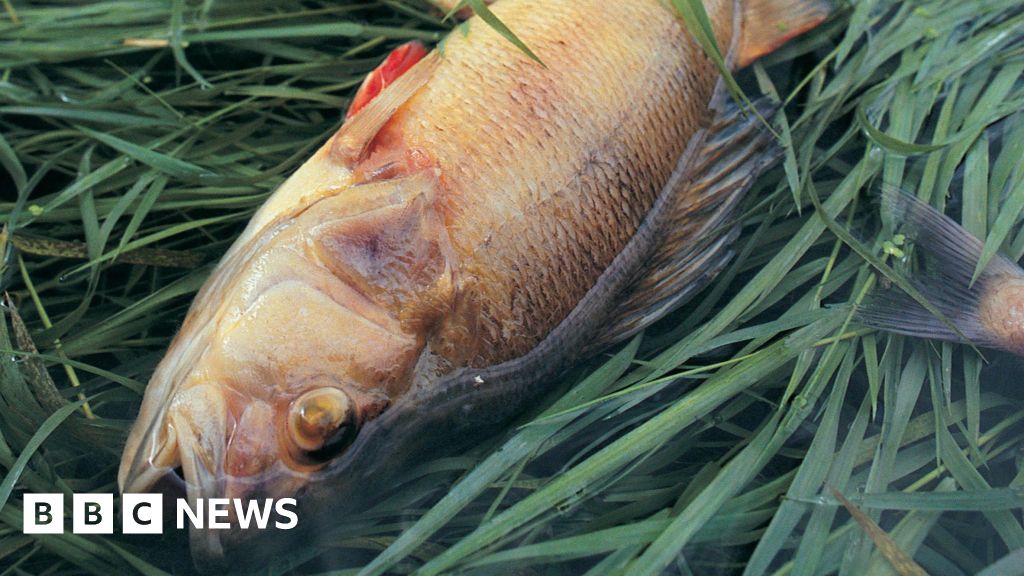By Leslie Katz,Senior Contributor
Copyright forbes

Starfish cling to the metal surface of an unexploded World War II warhead in the German Baltic Sea. The discarded weapons host a surprisingly dense colony of organisms.
Andrey Vedenin et al/Communications Earth & Environment
Once designed to destroy, they now sustain life. About 16 million tons of munitions dumped after the World Wars litter German waters, and some have become deep-sea habitats for thriving colonies of marine life, despite containing toxic compounds.
Underwater images have shown populations of algae, hydroids, mussels and other aquatic organisms living on war relics including mines, torpedo heads and bombs. But scientists have rarely ventured deeper to study the structure and composition of these artificial habitats in detail. Hoping to change that, a team sent a camera-equipped remotely operated vehicle to investigate a recently discovered dump site of World War II warheads in Lubeck Bay, in the German Baltic Sea.
What the researchers found surprised them. They observed an exceptional density of five species of invertebrates, such as starfish and anemones, along with three types of fish, with 43,000 individual organisms per square meter living on the surfaces of the unexploded warheads.
“We knew that the munition compounds are toxic, and did not expect at first to find that many organisms on it,” said Andrey Vedenin, a researcher with the Institute for Chemistry and Biology of the Marine Environment at Carl von Ossietzky University in Oldenburg, Germany. The finding is “a bit ironic,” he added in an interview: “The objects that were meant to kill people are now providing a habitat for marine fauna.”
Scientists aboard the Alkor research vessel in March deploy a submersible Blue Robotics remotely operated vehicle to explore the Lubeck Bay seafloor.
Ilka Thomsen/Geomar
MORE FOR YOU
Vedenin co-authored a new study in the journal Communications Earth and Environment. The team first mapped the exact location of the suspected but previously uncharted Lubeck Bay site using high-resolution sonar beams. Then they filmed the munitions with the cameras on the submersible remotely operated vehicle, analyzed water samples and examined two areas of the sediment in the surrounding sea floor, which remained nearly empty of marine life.
The warheads in Lubeck Bay are from World War II flying bombs known as V-1s, also known as “buzz bombs” for the sound their jet engines produced, and species live on their hard surfaces in numbers comparable with species found on natural hard substrata such as stones and boulders, according to the study. The Germans used V-1s to bomb London.
Have Hard Surface, Will Colonize
That organisms flocked to the warheads doesn’t surprise biological oceanographer Lisa Levin, a professor emerita at Scripps Institution of Oceanography at U.C. San Diego who was not involved with the research. Many marine species prefer hard surfaces, which are rare in sedimented ecosystems, she noted, and they’ll colonize where they can.
“Clearly hard substrate is a resource in short supply in the bottom of this bay, so animals use what there is, in this case warheads and other munitions,” she said in an interview.
Prior to the signing of the 1972 London Convention on the Prevention of Marine Pollution, explosive munitions were frequently and deliberately dumped unused at sea, where they leech chemicals into the water — a study from earlier this year found that the contamination extends beyond the dumping sites. As the war debris corrodes further, contamination is expected to increase, heightening environmental risks if the ordnance isn’t removed.
ForbesTech Reveals How ‘Colossal’ WWI Battle Blunder Gave Germans The Upper HandBy Leslie Katz
Interestingly, the marine life making their home on the V-1s seem to “know” which parts of their artificial reef is safest.
“It is important that the organisms inhabited mostly the metal parts of the warheads, while the exposed explosives, visible in some cases, were ‘clean’ and free from fauna,” Vedenin said.
Scientists are still piecing together the reasons for this selective colonization.
“Settling larvae respond to biofilms that form on the settlement surface,” Levin said. “The toxic parts of the warheads may generate different biofilms or kill the biofilms. They could also emit chemicals sensed by the larvae at contact that would trigger avoidance.”
Marine Life On The ‘Ghost Fleet’
A separate but related new study in the journal Scientific Data underscores how debris from human conflict not only provides aquatic habitats, but shapes them.
In it, researchers from Duke University Marine Laboratory present a high-resolution photographic map of the “Ghost Fleet” of Mallows Bay, a collection of more than 140 wrecked World War I steamships that lie in the Potomac River in Maryland just 40 miles downstream of downtown Washington, D.C. and now support wildlife from ospreys to barracudas. Built between 1917 and 1919, the ships were meant to bolster the United States’ ability to transport supplies and troops to European allies. The team mapped the site using drone-based remote sensing.
“In the Potomac, large beds of submerged aquatic vegetation in this area provide important feeding and nursery habitat for a variety of birds, fish, reptiles, amphibians, invertebrates and mammals,” the study reads. “By decreasing erosion rates and increasing accretion rates, the ships have created plentiful wetlands, forests and aquatic habitats.”
The mapping project, they suggest, could support future archaeological, ecological and cultural research. More broadly, it shows how debris left over from human conflict has been unexpectedly rewoven into the fabric of life.
As the “Ghost Fleet” shipwrecks become islands, they’re shaping both the coastal and aquatic habitats of Mallows Bay.
Duke Marine Robotics and Remote Sensing Lab
Editorial StandardsReprints & Permissions



